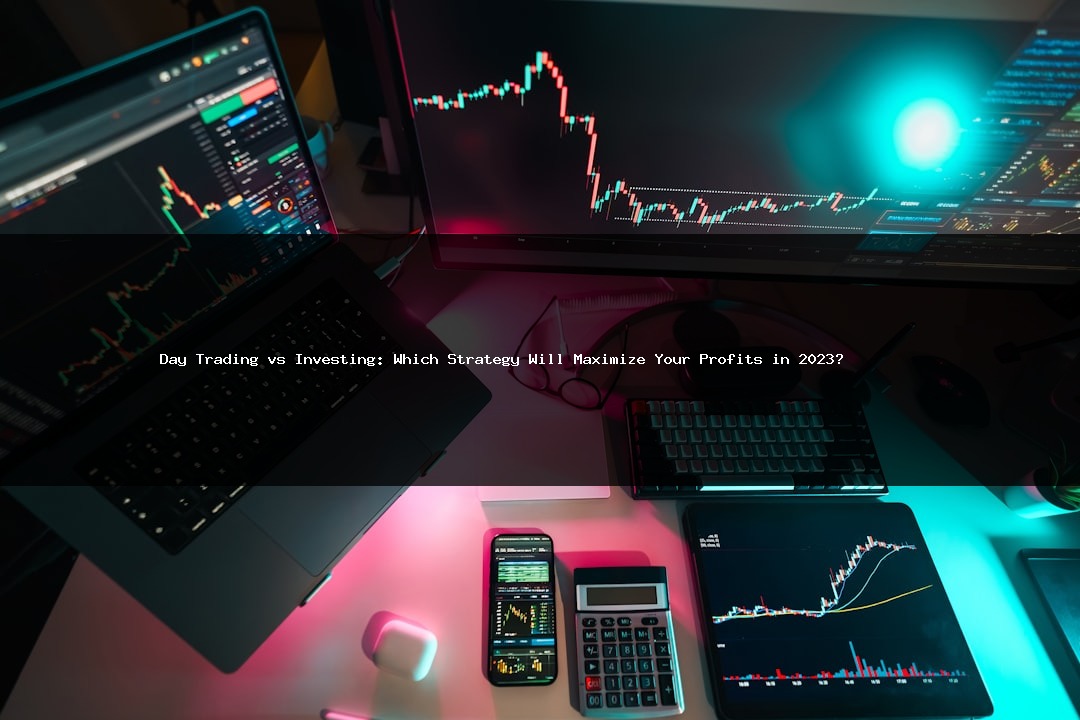In the fast-paced world of finance, the debate between day trading and investing continues to captivate both novice traders and seasoned investors alike. With the evolution of technology and the accessibility of financial markets, understanding these two distinct strategies is crucial for maximizing profits in 2023. Each approach offers unique advantages, risks, and opportunities, making it essential to evaluate which method aligns best with your financial goals, risk tolerance, and lifestyle. This article delves into the nuances of day trading and investing, providing insights that can help you make informed decisions in a rapidly changing market landscape.
Understanding Day Trading and Investing
To effectively compare day trading and investing, it is vital to understand the fundamental principles behind each strategy.
What is Day Trading?
Day trading involves buying and selling financial instruments within the same trading day. Day traders capitalize on small price fluctuations, often executing multiple trades throughout the day. This strategy requires a keen understanding of market trends, technical analysis, and the ability to react swiftly to market movements.
Characteristics of Day Trading
- Short-term Focus: Day traders aim for quick profits, holding positions for minutes to hours.
- High Frequency: They often execute dozens of trades in a single day.
- Leverage Usage: Many day traders use margin accounts to amplify their buying power.
- Technical Analysis: Day traders rely heavily on charts, indicators, and patterns.
What is Investing?
Investing, on the other hand, takes a long-term approach, focusing on the gradual appreciation of assets over time. Investors typically buy and hold securities for months, years, or even decades, aiming to benefit from the overall growth of the market and the compounding of returns.
Characteristics of Investing
- Long-term Horizon: Investors plan for future growth and stability rather than immediate profits.
- Lower Frequency: Trading activity is significantly less compared to day trading.
- Fundamental Analysis: Investors analyze the intrinsic value of assets before making purchases.
- Risk Management: A diversified portfolio helps mitigate risks over the long term.
Key Components of Day Trading and Investing
Both day trading and investing require an understanding of key components that influence market behavior and asset performance.
Market Analysis Techniques
Day traders rely predominantly on technical analysis, which involves analyzing statistical trends from trading activity. Common tools include:
- Charts: Price charts provide visual representations of price movements.
- Indicators: Tools like moving averages and Relative Strength Index (RSI) help assess market conditions.
- Volume Analysis: Examining trading volume can indicate market sentiment.
Investors, conversely, focus on fundamental analysis. This technique assesses an asset’s intrinsic value by examining economic indicators, company performance, and market conditions. Key elements include:
- Earnings Reports: Quarterly results provide insight into a company’s profitability.
- Economic Indicators: Metrics such as GDP growth, unemployment rates, and inflation impact market conditions.
- Market Trends: Long-term trends can influence the decision to buy or sell assets.
Risk Management Strategies
Effective risk management is crucial for both day trading and investing, albeit with different approaches.
- Day Trading: Traders often implement strict stop-loss orders to limit potential losses on each trade. Position sizing is also essential to prevent significant losses.
- Investing: Investors typically diversify their portfolios across various asset classes to spread risk. Regularly rebalancing the portfolio can help maintain desired risk levels.
Benefits and Importance
Both day trading and investing offer distinct advantages, depending on individual financial goals, risk tolerance, and market conditions.
Benefits of Day Trading
Day trading can be lucrative for those who possess the skills and temperament for high-frequency trading. Some benefits include:
- Quick Profits: Successful day traders can realize gains rapidly compared to long-term investing.
- Market Flexibility: Day traders can capitalize on short-term price movements, allowing them to react to news and events instantly.
- Independence: Many day traders work independently, enjoying the flexibility of setting their schedules.
Benefits of Investing
Investing offers several advantages that appeal to those with a long-term financial outlook:
- Compound Growth: By reinvesting dividends and capital gains, investors can benefit from compound interest over time.
- Less Stressful: A long-term strategy typically involves less daily pressure than day trading.
- Lower Costs: Fewer trades mean lower transaction fees and commissions, which can enhance overall returns.
Practical Applications
Understanding how to apply day trading and investing strategies can significantly impact your financial success. Here are some practical tips for both approaches.
Effective Day Trading Strategies
To succeed in day trading, consider the following strategies:
- Scalping: This involves making multiple trades to capture small price changes throughout the day.
- Momentum Trading: Traders look for stocks moving significantly in one direction on high volume and aim to profit from the continuation of that trend.
- News Trading: Reacting to news events or earnings reports can provide opportunities for quick profits.
For example, if a company announces better-than-expected earnings, a day trader might buy shares immediately after the announcement, anticipating a price surge.
Effective Investing Strategies
For long-term investors, the following strategies can enhance portfolio performance:
- Dollar-Cost Averaging: This strategy involves regularly investing a fixed amount of money, reducing the impact of market volatility.
- Value Investing: This approach focuses on identifying undervalued stocks that have the potential for growth over time.
- Index Fund Investing: Investing in index funds can provide exposure to a broad market with lower costs.
For instance, an investor using dollar-cost averaging might invest $500 monthly into an index fund, regardless of market conditions, ultimately building wealth over time.
Frequently Asked Questions
What is the main difference between day trading and investing?
The primary difference lies in the time horizon and trading frequency. Day trading involves executing multiple trades within a single day to profit from short-term price movements, while investing focuses on long-term asset appreciation and typically involves buying and holding securities for an extended period.
Can you be successful at both day trading and investing?
Yes, it is possible to be successful at both strategies; however, it requires different skill sets, time commitments, and risk management techniques. Many individuals choose to focus on one approach that aligns with their financial goals and lifestyle.
What skills are essential for day trading?
Successful day traders typically possess the following skills:
- Technical Analysis: The ability to read charts and interpret market data.
- Quick Decision-Making: The capacity to make fast trading decisions in a volatile environment.
- Risk Management: Knowledge of managing trades to minimize losses.
How much capital do I need to start day trading?
The amount of capital required to start day trading can vary significantly. In the U.S., the Financial Industry Regulatory Authority (FINRA) requires a minimum of $25,000 in a margin account for pattern day traders. However, it is advisable to have additional capital to manage risks and withstand market fluctuations.
What are the tax implications of day trading vs. investing?
Day trading profits are typically taxed as ordinary income, while long-term investments held for over a year may qualify for lower capital gains tax rates. Investors should consult a tax professional to understand their specific tax obligations based on their trading activities.
Is day trading suitable for everyone?
No, day trading is not suitable for everyone. It requires a specific skill set, a high tolerance for risk, and the ability to handle stress. Those who prefer a more stable, long-term approach may find investing more suitable for their financial goals.
How can I get started with investing?
To get started with investing, follow these steps:
- Set Financial Goals: Determine your investment objectives, time horizon, and risk tolerance.
- Educate Yourself: Learn about various investment vehicles, market trends, and strategies.
- Open an Investment Account: Choose a brokerage that aligns with your needs.
- Diversify Your Portfolio: Invest in a mix of asset classes to spread risk.
Conclusion
In conclusion, both day trading and investing have their merits and drawbacks. Day trading offers the potential for rapid profits through quick trades, while investing focuses on long-term growth and wealth accumulation. Your choice between the two should be based on your financial goals, risk tolerance, and lifestyle preferences. By understanding the key components, benefits, and practical applications of each strategy, you can make informed decisions that align with your financial aspirations in 2023 and beyond. Remember that regardless of the path you choose, continuous education and effective risk management are critical for success in the financial markets.





